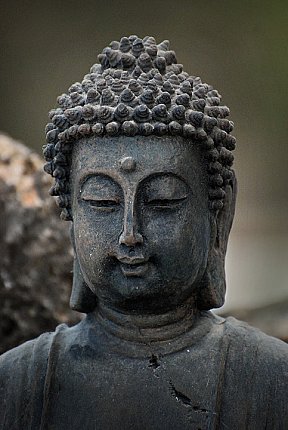Vajrayogini

View our Buddha statues in our gallery
Vajrayogini is a Buddhist deity and Dakini associated with Vajrayana Buddhism. Vajrayogini's true nature is of great passion which is free of selfishness and illusion. Vajrayogini intensely works for the well-being of others and for the destruction of ego. Since she guides the person towards the way which transforms the people into enlightened virtues, she is regarded as the perfect idol to practice Vajrayana.
Vajrayogini is also regarded as Anuttarayoga Tantra Ista-devata (Yidam or Meditational Deity) and the practices is associated with her are Chod and the Eleven Yogas of Naropa. Her practice includes methods for preventing ordinary death, intermediate state and rebirth, and for transforming all mundane daily experiences into higher spiritual paths.
Origin and Lineage

It is believed that the meditation of Vajrayogini was originated in India between the 10th-12th centuries. Basically, it was evolved from the Cakrasamvara Tantra, where Vajrayogini was his Yab-Yum consort. Hence, the practice of Vajrayogini become a stand-alone practice of Anuttarayoga Tantra along with other tantras such as the Cakrasamvara and Hevajra Tantras.
The practice of Vajrayogini were originally taught by Vajradhara which consists of two stages: generation stage and completion stage. Vajradhara manifested in the form of Heruka to expound the Root Tantra of Chakrasamvara, and it was in this tantra that he explained the practice of Vajrayogini. Among the lineages practiced, there are only three lineage that are most commonly practiced. The first one is Narokhacho lineage. It was transmitted from Vajrayogini to Naropa. The second one is Maitrikhacho lineage. It was transmitted from Vajrayogini to Maitripa. The third one is Indrakhacho lineage. It was transmitted from Vajrayogini to Indrabodh.
Iconography of Vajrayogini
In Buddhist arts, Vajrayogini is depicted in a deep red form along with the third eye of wisdom which is set vertically on her forehead. She is portrayed in the traditional custom of a dakini along with driguk in her right hand. She holds kapala filled with blood by her left hand that she drinks from with upturned mouth. Her hair is set as an unbound and flowing. Her right leg steps on the chest of Rati while her left leg steps on the forehead of Kamadeva. Her head is crowned with a crown of five human skulls. She also wears a necklace of fifty human skulls. She is portrayed in standing posture in the center of a blazing fire.
Forms of Vajrayogini
Vajrayogini is also visualized in an alternate form in over two thirds of the practices. The main forms are Khadgayogini, Vajravarahi, and Krodikali.
Vajrayogini as Vajravarahi is often pictured with a sow's head as an ornament. She is also depicted with the head of a sow herself. Since, the pig being associated with ignorance in Buddhism. It can be assumed that the sow head is related to the origins of Vajravarahi from the Hindu sow-faced goddess Varahi.
Khadgayogini hold Khadga, a sword like weapon, in place of Vajra
Spiritual meaning in Vajrayogini's forms
Each aspect of Vajrayogini's form is designed to convey a spiritual meaning. Her red-colored body symbolizes the blazing of her inner fire of spiritual transformation as well as life force, blood of birth and menstrual blood. Her single face symbolizes that she has realized that all phenomena are of one nature in emptiness. Her two arms symbolize the realization of the two truths and the three eyes symbolizes her ability to see everything in the past, present, and the future. The curved driguk knife that she holds in her right hand shows her power to cut the continuum of the delusions and obstacles of her followers and of all living beings. The act of drinking the blood from kapala that she holds in her left hand symbolizes her experience of the clear light of bliss.
View our collections of statues and arts in our gallery
Vajrayogini Temples
Since Vajrayana practices are majorly followed by Newar Buddhists, we can see some of the important Buddhist pilgrimage sites in Nepal dedicated to different forms of Vajrayogini. These temples are also serve as important pilgrimage places for Tibetan Buddhists. These temple includes Sankhu Vajrayogini temple, Vidhyeshvari Vajrayogini temple, Parping Vajrayogini temple, Lalitpur Vajravarahi temple and the Guhyeshwari temple.













































